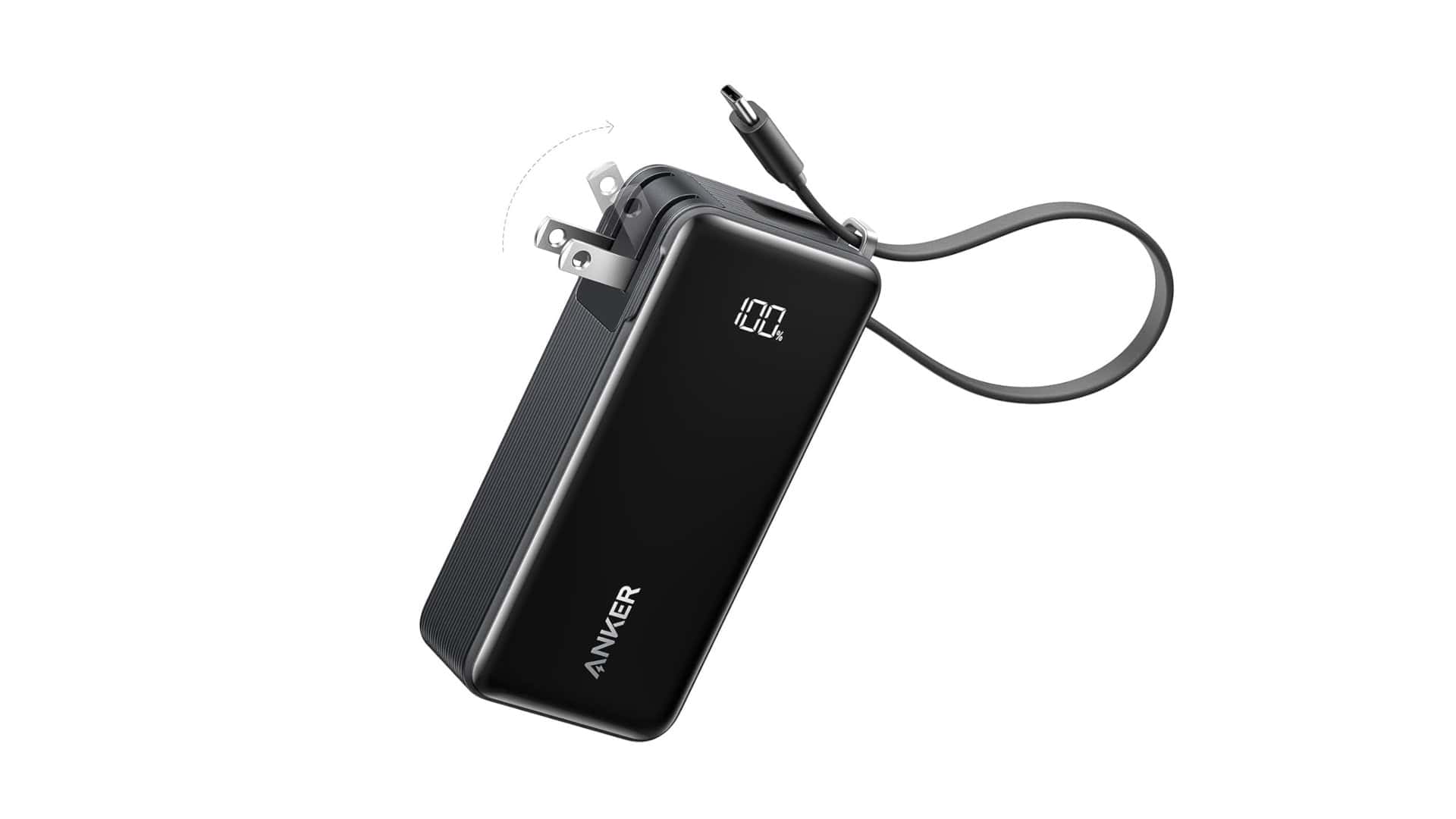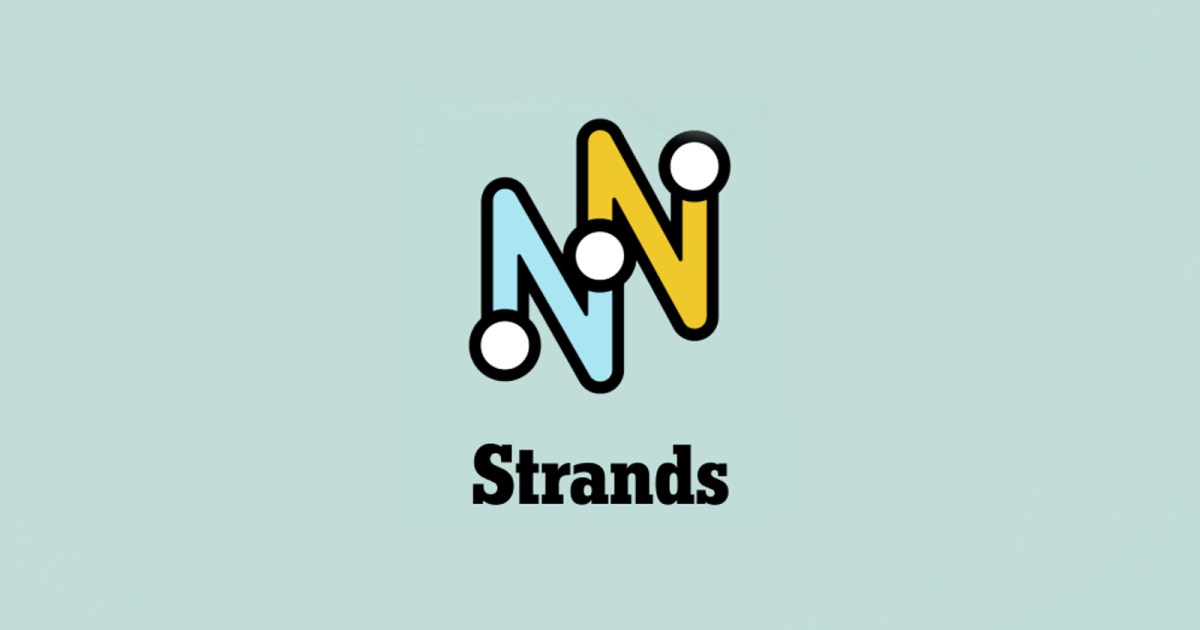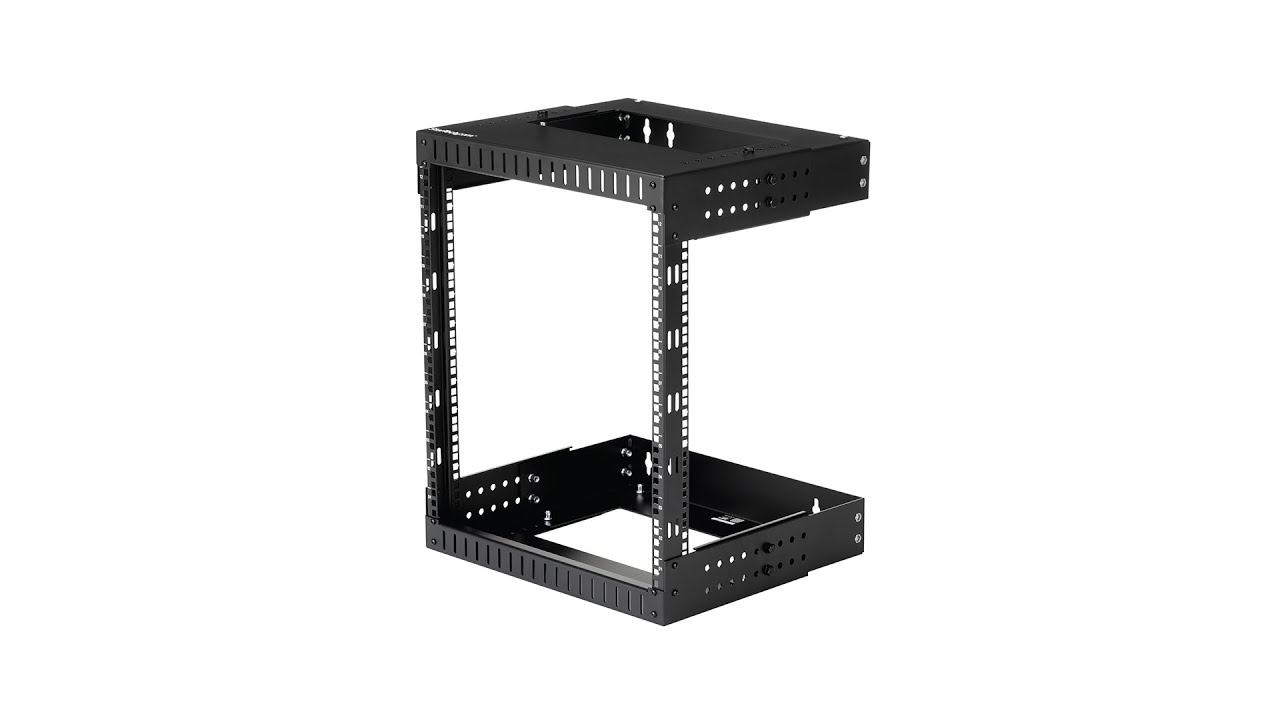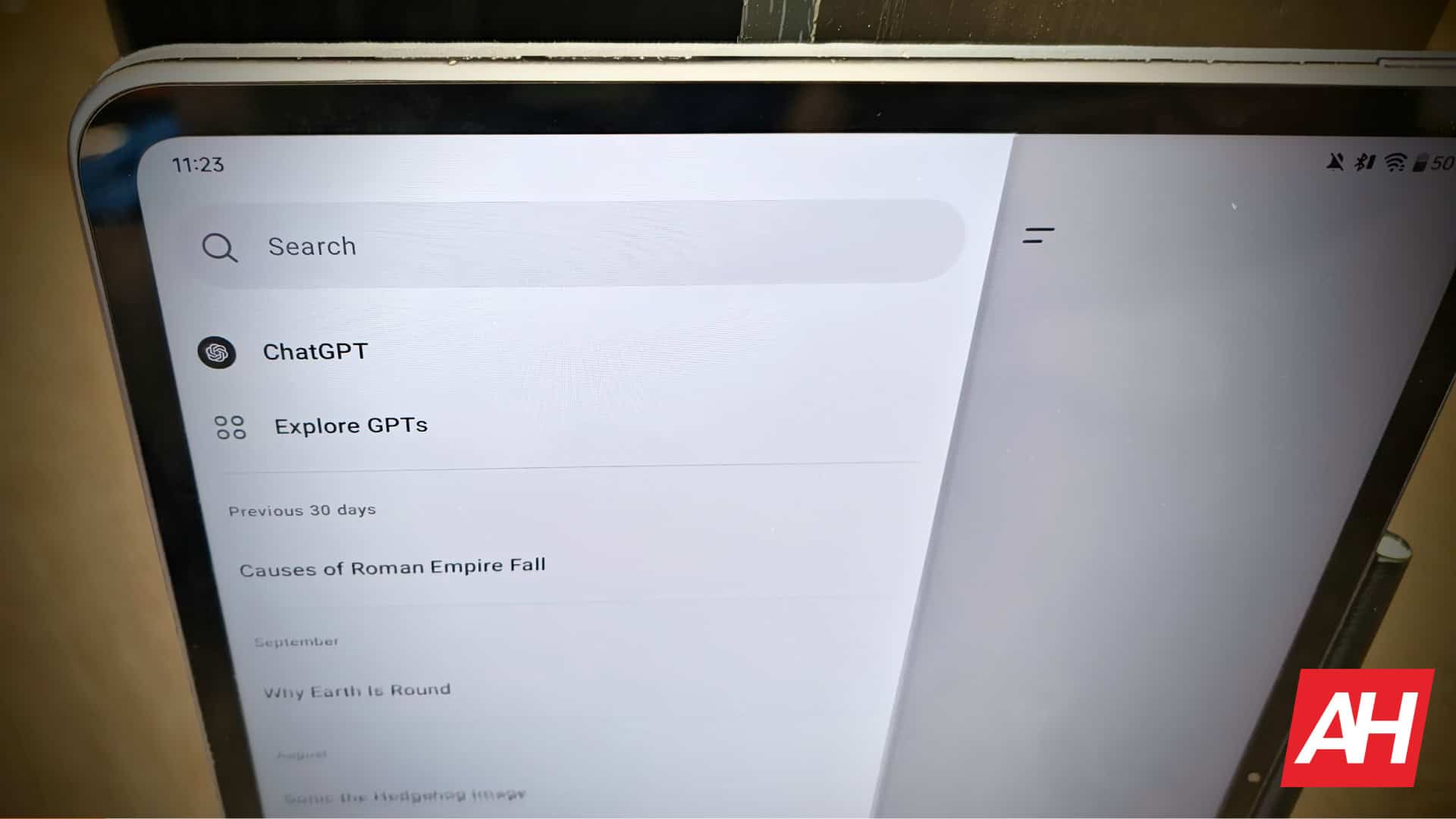Technology
Snag this Anker 3-in-1 10,000mAh power bank for $36

This Anker power bank deal is one you definitely want to consider if you don’t already have a power bank to keep your devices topped up. Smartphone batteries have gotten better over the years, but it’s still really easy to run out of juice and when that happens, it tends to happen at the worst possible times. If you had a power bank, however, that would probably no longer be an issue. You could just plug your device into it and recharge your phone. Then you’re good to go until you can plug it in at home, or wherever you end up getting to an AC outlet.
Normally this particular Anker power bank would retail for $45 at its full price, but because of this Amazon deal, you can actually get it for $36 instead. That’s really close to its lowest-ever price of $32.39. This is a 10,000mAh power bank which is plenty of power to recharge your phone at least once from 0% to 100%. Then you have some extra power left over for another partial charge of your phone. Or if your phone has less than a 5,000mAh battery capacity, you could charge it up to a full two times.
You could also use it to charge up multiple devices as needed. The power bank comes with a built-in USB-C cable and there’s an extra port for plugging in a second cable to charge another device. Additionally, it has a folding AC plug so you can draw power right from an AC source. Letting you use it like a regular charger when needed. This power bank also features a 30W two-way fast charge. So it’ll output 30W for whatever’s plugged in, and it can charge back at 30W as well.

Technology
NYT Strands today: hints, spangram and answers for Sunday, October 6

Strands is a brand new daily puzzle from the New York Times. A trickier take on the classic word search, you’ll need a keen eye to solve this puzzle.
Like Wordle, Connections, and the Mini Crossword, Strands can be a bit difficult to solve some days. There’s no shame in needing a little help from time to time. If you’re stuck and need to know the answers to today’s Strands puzzle, check out the solved puzzle below.
How to play Strands
You start every Strands puzzle with the goal of finding the “theme words” hidden in the grid of letters. Manipulate letters by dragging or tapping to craft words; double-tap the final letter to confirm. If you find the correct word, the letters will be highlighted blue and will no longer be selectable.
If you find a word that isn’t a theme word, it still helps! For every three non-theme words you find that are at least four letters long, you’ll get a hint — the letters of one of the theme words will be revealed and you’ll just have to unscramble it.
Every single letter on the grid is used to spell out the theme words and there is no overlap. Every letter will be used once, and only once.
Each puzzle contains one “spangram,” a special theme word (or words) that describe the puzzle’s theme and touches two opposite sides of the board. When you find the spangram, it will be highlighted yellow.
The goal should be to complete the puzzle quickly without using too many hints.
Hint for today’s Strands puzzle
Today’s theme is “Got any bleu cheese?”
Here’s a hint that might help you: ingredients in a vegetable-based meal
Today’s Strand answers

Today’s spanagram
We’ll start by giving you the spangram, which might help you figure out the theme and solve the rest of the puzzle on your own:
Today’s Strands answers
- EGGS
- BACON
- GREENS
- TOMATO
- CHICKEN
- VINAIGRETTE
Servers computers
12U Wall-Mount Server Rack – RK12WALLOA | StarTech.com

This open-frame wall-mount server rack provides 12U of storage, helping you to save space and stay organized. The equipment rack features an adjustable depth and can hold a total of up to 198 lb. (90 kg).
To learn more visit StarTech.com
source
Technology
ChatGPT can now help you code and write better

ChatGPT shook the world when we found out all of the things that it could do. Since then, people have used it to generate millions of pieces of media using the chatbot. However, for people who don’t want to use it to generate content for them, OpenAI just announced Canvas. This is a separate interface that people can use to help them with their writing and coding.
We’re at a point where much of the media we see on the internet could have come from an AI model. This is a sad reality, as AI is a powerful technology that could greatly increase a person’s productivity. However, there are far too many people who want to generate content for them and put forth zero effort into creating anything.
OpenAI just announced Canvas, a platform to help with your writing and coding
Canvas is a separate interface that you’ll be able to summon when you’re working on a project. To summon it, just type “use canvas” into the ChatGPT text field. When you do, you’ll see the Canvas pop up in its own windows.
Just like with ChatGPT, it will have access to files that you upload. OpenAI gives an example of creating a blog post from the users’ notes. When it generates the draft, you’ll have access to several editing tools to help you refine it. It can act as a copywriter for you if you need an assistant to help you edit your work. You can set the reading level, edit specific parts of the text, and even have it generate new titles for you. It will be just like having a human assistant with you.
OpenAI Canvas won’t only help you with writing. It will also help you with your coding. You’re able to select sections of your code and ask ChatGPt anything about it. You can ask it to add comments, review the code, fix bugs, and so on.
You’re also able to have it generate bits of code for you. All you have to do is type what you want ChatGPT to do, and it will perform the task.
You can access this feature if you’re a ChatGPT Plus or Teams user. Enterprise and EDU users will gain access next week.
Technology
Meta’s Movie Gen looks like a huge leap forward for AI video (but you can’t use it yet)

At this point, you probably either love the idea of making realistic videos with generative AI, or you think it’s a morally bankrupt endeavor that devalues artists and will usher in a disastrous era of deepfakes we’ll never escape from. It’s hard to find middle ground. Meta isn’t going to change minds with Movie Gen, its latest video creation AI model, but no matter what you think of AI media creation, it could end up being a significant milestone for the industry.
Movie Gen can produce realistic videos alongside music and sound effects at 16 fps or 24 fps at up to 1080p (upscaled from 768 by 768 pixels). It can also generative personalized videos if you upload a photo, and crucially, it appears to be easy to edit videos using simple text commands. Notably, it can also edit normal, non-AI videos with text. It’s easy to imagine how that could be useful for cleaning up something you’ve shot on your phone for Instagram. Movie Gen is just purely research at the moment —Meta won’t be releasing it to the public, so we have a bit of time to think about what it all means.
The company describes Movie Gen as its “third wave” of generative AI research, following its initial media creation tools like Make-A-Scene, as well as more recent offerings using its Llama AI model. It’s powered by a 30 billion parameter transformer model that can make 16 second-long 16 fps videos, or 10-second long 24 fps footage. It also has a 13 billion parameter audio model that can make 45 seconds of 48kHz of content like “ambient sound, sound effects (Foley), and instrumental background music” synchronized to video. There’s no synchronized voice support yet “due to our design choices,” the Movie Gen team wrote in their research paper.
Meta says Movie Gen was initially trained on “a combination of licensed and publicly available datasets,” including around 100 million videos, a billion images and a million hours of audio. The company’s language is a bit fuzzy when it comes to sourcing — Meta has already admitted to training its AI models on data from every Australian user’s account, it’s even less clear what the company is using outside of its own products.
As for the actual videos, Movie Gen certainly looks impressive at first glance. Meta says that in its own A/B testing, people have generally preferred its results compared to OpenAI’s Sora and Runway’s Gen3 model. Movie Gen’s AI humans look surprisingly realistic, without many of the gross telltale signs of AI video (disturbing eyes and fingers, in particular).
“While there are many exciting use cases for these foundation models, it’s important to note that generative AI isn’t a replacement for the work of artists and animators,” the Movie Gen team wrote in a blog post. “We’re sharing this research because we believe in the power of this technology to help people express themselves in new ways and to provide opportunities to people who might not otherwise have them.”
It’s still unclear what mainstream users will do with generative AI video, though. Are we going to fill our feeds with AI video, instead of taking our own photos and videos? Or will Movie Gen be deconstructed into individual tools that can help sharpen our own content? We can already easily remove objects from the backgrounds of photos on smartphones and computers, more sophisticated AI video editing seems like the next logical step.
Servers computers
OPEN RACK SERVER DARI TRIPLEK

Open Rak Server
#rtrw #rtrwnet #isp
#networking
#network
#wifi #topologi #jaringan #global #ratio #splitter #optical #fiberoptic #ftth
source
Technology
Racking up major purchase conversion rates with mobile game web shops

Presented by Xsolla
In a world of ever-declining revenue margins for game developers, direct-to-consumer is becoming essential. Cost-effective services, platforms and tools to build web shops are thick on the ground, and game companies of any size can afford to get set up, sell and rack up some astonishing numbers, says Artem Liubutov, head of monetization at Xsolla.
Across the 400 web shops Xsolla has launched, the minimum increase in game revenue has been in the range of 10% to 16% and the conversion rate, from logging in to the web shop to purchase, ranges between 40% and 60%, Liubutov says. And now 40 out of the top 100 grossing games in the world are working with them, including Tilting Point, Godspeed Games, Hyper Hyppo and Kefir.
“If a game has done things properly, if they transfer paying players and avoid spending marketing money on transferring non-payers, these numbers are totally doable,” he explains. “Big publishers, mid-size publishers, even relatively small mobile games can achieve that without spending a lot of money on marketing. You can do it very smartly with web shops.”
Adding player value
A web shop is really all about the value-add. It should be a place where players can find unique items that enhance the playing experience and offers valuable items. Thoughtful, high-value offers attract the most valuable players — the big spenders who enthusiastically spend beyond the $99.99 price point that traditional platforms are limited to.
“Web shops are perfect for whales and super-whales,” Liubutov says. “They’re willing to spend much more in exchange for additional value, which not only leads to increased average purchases, but also the number of repeat purchases, and as a result, retention and LTV, since they want to use what they bought.”
Web shops are also capable of re-anchoring players to a new price point — many developers have seen their price point go sky-high. As the new purchasing experience is entirely familiar to players, it increases their comfort in shelling out rather than to a shill inside their game.
So when a high price point is combined with a commensurate amount of perceived value, players can actually shift from one segment to another. For example, from dolphins to whales, from whales to super-whales.
“For some games, especially for core genres like 4X strategy and RPG games, these very expensive packages can bring more than 50 percent of all revenue in the game,” he says. “That’s something we didn’t expect three years ago, but now we’ve seen this happen more and more.”
Getting started for success
Setting up a web shop is easier than ever. Xsolla just launched Web Shop 2.0, as well as their Instant Web Shop, which can get you up and running in 24 hours. But doing it right demands some time and care right out of the gate. The analysis stage is particularly important, Liubutov says, and he identifies three major areas to dig into.
1. Analysis of already launched web shops, especially for games in similar genres. Pay attention to what they sell, their price tiers and what kind of promotions and live ops they’re using.
2. Analysis of the existing target audience and segmenting players — especially paying players, since they’re obviously your bigger fans and best customers. Break down which in-game activities have the most impact on every segment, and whether each segment responds better to discounts or to added value.
3. Analysis of items and offers in the game — determine which generate more revenue, and how each segment reacts to each price point.
And remember, there’s no limit to the price point in a web shop, and price experiments are easy to stage. A $10K package might sell, if there are enough dedicated players — and developers are often surprised to find that they have players who can and will spend far more than they thought.
“With web shops, the goal is to change behavior, to form a new spending habit — basically to make a paradigm shift,” Liubutov explains. “The new normal should be that mobile is where I play and the web is where I pay.”
The five golden rules of building a webshop
While Xsolla has partnered with developers of every size to build and launch successful web shops, they’ve arrived at five principles, or golden rules, for success.
Rule #1
Treat the web shop as an extension of the game. To form a habit, everything should be easy. For example, if the web shop’s UI is different from the game’s UI, a player will face a learning curve when trying to figure out how to use the shop, where to go and how to pay.
“In the first nanosecond when players see the web shop, you want it to feel completely familiar, with the same colors, same buttons, same flow, same logic, same types of offers, same events happening, which makes it much easier to start purchasing,” Liubutov says. “It may sound pretty obvious, but almost everyone that we’ve seen, including the biggest publishers in the world, they keep making this mistake. It happens when two very separate teams operate on in-game purchases and on the web shops, without communicating with each other.”
Rule #2
Continuous communication is key. It’s an endless cycle of telling players about the existence of the web shop, and then continuously reminding them that it exists. Yes, they’re endless tasks, but they’re crucial for success. Build a direct communication tool immediately, if you don’t have one already, whether it’s Discord, Facebook or a forum.
Rule #3
Friction is your biggest enemy, and it leads directly to churn. Authentication is a big sticking point, as is laboriously entering payment methods, and making it difficult to calculate the difference in value between in-game offers and web offers.
Rule #4
Value is king in web shops. Liubutov recommends a 10% increase in value or a 10% discount to start. The benefit should be much higher than the transactional cost of a new game experience.
Rule #5
Leverage the web shop’s live ops power. It’s possible to just sell evergreen virtual currency packages and see a 10% increase in revenue. But by leveraging all the live ops capabilities — by segmenting players and doing personalized offers, loyalty programs, targeted bundles and first-time offers — the increase is staggering, Liubutov says. And the best way to do this is by having the in-game live ops team work with the web shop live operations.
“If you follow those five rules, if you pay attention to your metrics and think about value and push live ops, the increase in revenue can be very substantial. The pure ROI on doing a web shop is very high,” Liubutov says. “We know billion-dollar games that have now fully embraced a web shop strategy. It’s a number-one priority for these games, because of the value they’ve received in the last year or two working with us or doing this on their own.”
Sponsored articles are content produced by a company that is either paying for the post or has a business relationship with VentureBeat, and they’re always clearly marked. For more information, contact
-

 Womens Workouts2 weeks ago
Womens Workouts2 weeks ago3 Day Full Body Women’s Dumbbell Only Workout
-

 Science & Environment3 weeks ago
Science & Environment3 weeks agoHow to unsnarl a tangle of threads, according to physics
-

 Science & Environment2 weeks ago
Science & Environment2 weeks agoHyperelastic gel is one of the stretchiest materials known to science
-

 Technology3 weeks ago
Technology3 weeks agoWould-be reality TV contestants ‘not looking real’
-

 Science & Environment2 weeks ago
Science & Environment2 weeks ago‘Running of the bulls’ festival crowds move like charged particles
-

 Science & Environment2 weeks ago
Science & Environment2 weeks agoMaxwell’s demon charges quantum batteries inside of a quantum computer
-

 News2 weeks ago
News2 weeks agoOur millionaire neighbour blocks us from using public footpath & screams at us in street.. it’s like living in a WARZONE – WordupNews
-

 Science & Environment2 weeks ago
Science & Environment2 weeks agoHow to wrap your mind around the real multiverse
-

 Science & Environment2 weeks ago
Science & Environment2 weeks agoSunlight-trapping device can generate temperatures over 1000°C
-

 Science & Environment2 weeks ago
Science & Environment2 weeks agoLiquid crystals could improve quantum communication devices
-

 Science & Environment2 weeks ago
Science & Environment2 weeks agoQuantum ‘supersolid’ matter stirred using magnets
-

 Science & Environment2 weeks ago
Science & Environment2 weeks agoITER: Is the world’s biggest fusion experiment dead after new delay to 2035?
-

 Science & Environment2 weeks ago
Science & Environment2 weeks agoPhysicists are grappling with their own reproducibility crisis
-

 Science & Environment2 weeks ago
Science & Environment2 weeks agoQuantum forces used to automatically assemble tiny device
-

 Science & Environment2 weeks ago
Science & Environment2 weeks agoWhy this is a golden age for life to thrive across the universe
-

 News3 weeks ago
News3 weeks agoYou’re a Hypocrite, And So Am I
-
News3 weeks ago
the pick of new debut fiction
-

 Sport2 weeks ago
Sport2 weeks agoJoshua vs Dubois: Chris Eubank Jr says ‘AJ’ could beat Tyson Fury and any other heavyweight in the world
-

 Science & Environment3 weeks ago
Science & Environment3 weeks agoCaroline Ellison aims to duck prison sentence for role in FTX collapse
-

 Science & Environment2 weeks ago
Science & Environment2 weeks agoNuclear fusion experiment overcomes two key operating hurdles
-

 Technology1 week ago
Technology1 week ago‘From a toaster to a server’: UK startup promises 5x ‘speed up without changing a line of code’ as it plans to take on Nvidia, AMD in the generative AI battlefield
-

 Science & Environment3 weeks ago
Science & Environment3 weeks agoTime travel sci-fi novel is a rip-roaringly good thought experiment
-

 Science & Environment2 weeks ago
Science & Environment2 weeks agoLaser helps turn an electron into a coil of mass and charge
-

 Science & Environment3 weeks ago
Science & Environment3 weeks agoNerve fibres in the brain could generate quantum entanglement
-

 MMA1 week ago
MMA1 week agoConor McGregor challenges ‘woeful’ Belal Muhammad, tells Ilia Topuria it’s ‘on sight’
-

 Football1 week ago
Football1 week agoFootball Focus: Martin Keown on Liverpool’s Alisson Becker
-
Business1 week ago
Eurosceptic Andrej Babiš eyes return to power in Czech Republic
-

 Science & Environment2 weeks ago
Science & Environment2 weeks agoRethinking space and time could let us do away with dark matter
-

 Science & Environment2 weeks ago
Science & Environment2 weeks agoFuture of fusion: How the UK’s JET reactor paved the way for ITER
-
Business1 week ago
Should London’s tax exiles head for Spain, Italy . . . or Wales?
-

 News2 weeks ago
News2 weeks agoIsrael strikes Lebanese targets as Hizbollah chief warns of ‘red lines’ crossed
-

 News3 weeks ago
News3 weeks ago▶️ Media Bias: How They Spin Attack on Hezbollah and Ignore the Reality
-

 News3 weeks ago
News3 weeks ago▶️ Hamas in the West Bank: Rising Support and Deadly Attacks You Might Not Know About
-

 News3 weeks ago
News3 weeks agoNew investigation ordered into ‘doorstep murder’ of Alistair Wilson
-

 Science & Environment2 weeks ago
Science & Environment2 weeks agoUK spurns European invitation to join ITER nuclear fusion project
-

 CryptoCurrency2 weeks ago
CryptoCurrency2 weeks agoCardano founder to meet Argentina president Javier Milei
-

 Science & Environment2 weeks ago
Science & Environment2 weeks agoMeet the world's first female male model | 7.30
-

 Science & Environment2 weeks ago
Science & Environment2 weeks agoX-rays reveal half-billion-year-old insect ancestor
-

 Science & Environment3 weeks ago
Science & Environment3 weeks agoA slight curve helps rocks make the biggest splash
-
Business3 weeks ago
JPMorgan in talks to take over Apple credit card from Goldman Sachs
-

 CryptoCurrency2 weeks ago
CryptoCurrency2 weeks agoBitcoin bulls target $64K BTC price hurdle as US stocks eye new record
-

 Womens Workouts2 weeks ago
Womens Workouts2 weeks agoBest Exercises if You Want to Build a Great Physique
-

 News2 weeks ago
News2 weeks agoWhy Is Everyone Excited About These Smart Insoles?
-

 News2 weeks ago
News2 weeks agoFour dead & 18 injured in horror mass shooting with victims ‘caught in crossfire’ as cops hunt multiple gunmen
-

 Technology2 weeks ago
Technology2 weeks agoRobo-tuna reveals how foldable fins help the speedy fish manoeuvre
-

 CryptoCurrency2 weeks ago
CryptoCurrency2 weeks agoEthereum is a 'contrarian bet' into 2025, says Bitwise exec
-

 Science & Environment2 weeks ago
Science & Environment2 weeks agoA new kind of experiment at the Large Hadron Collider could unravel quantum reality
-

 Health & fitness3 weeks ago
Health & fitness3 weeks agoThe secret to a six pack – and how to keep your washboard abs in 2022
-

 Science & Environment2 weeks ago
Science & Environment2 weeks agoQuantum time travel: The experiment to ‘send a particle into the past’
-

 Science & Environment2 weeks ago
Science & Environment2 weeks agoWhy we need to invoke philosophy to judge bizarre concepts in science
-

 CryptoCurrency2 weeks ago
CryptoCurrency2 weeks agoBitcoin miners steamrolled after electricity thefts, exchange ‘closure’ scam: Asia Express
-

 CryptoCurrency2 weeks ago
CryptoCurrency2 weeks agoDorsey’s ‘marketplace of algorithms’ could fix social media… so why hasn’t it?
-

 CryptoCurrency2 weeks ago
CryptoCurrency2 weeks agoDZ Bank partners with Boerse Stuttgart for crypto trading
-

 CryptoCurrency2 weeks ago
CryptoCurrency2 weeks agoLow users, sex predators kill Korean metaverses, 3AC sues Terra: Asia Express
-

 Womens Workouts2 weeks ago
Womens Workouts2 weeks agoEverything a Beginner Needs to Know About Squatting
-

 Womens Workouts2 weeks ago
Womens Workouts2 weeks ago3 Day Full Body Toning Workout for Women
-

 Travel2 weeks ago
Travel2 weeks agoDelta signs codeshare agreement with SAS
-

 Servers computers2 weeks ago
Servers computers2 weeks agoWhat are the benefits of Blade servers compared to rack servers?
-

 Politics2 weeks ago
Politics2 weeks agoHope, finally? Keir Starmer’s first conference in power – podcast | News
-

 Technology1 week ago
Technology1 week agoThe best robot vacuum cleaners of 2024
-

 Sport2 weeks ago
Sport2 weeks agoUFC Edmonton fight card revealed, including Brandon Moreno vs. Amir Albazi headliner
-

 Technology2 weeks ago
Technology2 weeks agoiPhone 15 Pro Max Camera Review: Depth and Reach
-

 News2 weeks ago
News2 weeks agoBrian Tyree Henry on voicing young Megatron, his love for villain roles
-

 Health & fitness3 weeks ago
Health & fitness3 weeks agoThe maps that could hold the secret to curing cancer
-

 Science & Environment2 weeks ago
Science & Environment2 weeks agoBeing in two places at once could make a quantum battery charge faster
-

 CryptoCurrency2 weeks ago
CryptoCurrency2 weeks agoRedStone integrates first oracle price feeds on TON blockchain
-

 CryptoCurrency2 weeks ago
CryptoCurrency2 weeks agoBlockdaemon mulls 2026 IPO: Report
-

 CryptoCurrency2 weeks ago
CryptoCurrency2 weeks agoCoinbase’s cbBTC surges to third-largest wrapped BTC token in just one week
-
Politics2 weeks ago
UK consumer confidence falls sharply amid fears of ‘painful’ budget | Economics
-

 Science & Environment2 weeks ago
Science & Environment2 weeks agoCNN TÜRK – 🔴 Canlı Yayın ᴴᴰ – Canlı TV izle
-

 Technology2 weeks ago
Technology2 weeks agoGet ready for Meta Connect
-

 News1 week ago
News1 week agoUS Newspapers Diluting Democratic Discourse with Political Bias
-

 Technology1 week ago
Technology1 week agoQuantum computers may work better when they ignore causality
-

 Science & Environment2 weeks ago
Science & Environment2 weeks agoHow one theory ties together everything we know about the universe
-

 CryptoCurrency2 weeks ago
CryptoCurrency2 weeks agoCrypto scammers orchestrate massive hack on X but barely made $8K
-

 Science & Environment2 weeks ago
Science & Environment2 weeks agoTiny magnet could help measure gravity on the quantum scale
-

 Science & Environment2 weeks ago
Science & Environment2 weeks agoHow do you recycle a nuclear fusion reactor? We’re about to find out
-

 CryptoCurrency2 weeks ago
CryptoCurrency2 weeks agoDecentraland X account hacked, phishing scam targets MANA airdrop
-

 CryptoCurrency2 weeks ago
CryptoCurrency2 weeks agoTelegram bot Banana Gun’s users drained of over $1.9M
-

 CryptoCurrency2 weeks ago
CryptoCurrency2 weeks agoVonMises bought 60 CryptoPunks in a month before the price spiked: NFT Collector
-

 CryptoCurrency2 weeks ago
CryptoCurrency2 weeks agoSEC asks court for four months to produce documents for Coinbase
-

 CryptoCurrency2 weeks ago
CryptoCurrency2 weeks ago‘Silly’ to shade Ethereum, the ‘Microsoft of blockchains’ — Bitwise exec
-

 CryptoCurrency2 weeks ago
CryptoCurrency2 weeks agoVitalik tells Ethereum L2s ‘Stage 1 or GTFO’ — Who makes the cut?
-

 CryptoCurrency2 weeks ago
CryptoCurrency2 weeks ago‘No matter how bad it gets, there’s a lot going on with NFTs’: 24 Hours of Art, NFT Creator
-
Business2 weeks ago
Thames Water seeks extension on debt terms to avoid renationalisation
-
Business2 weeks ago
How Labour donor’s largesse tarnished government’s squeaky clean image
-
Politics2 weeks ago
‘Appalling’ rows over Sue Gray must stop, senior ministers say | Sue Gray
-

 News2 weeks ago
News2 weeks agoBrian Tyree Henry on voicing young Megatron, his love for villain roles
-

 Womens Workouts2 weeks ago
Womens Workouts2 weeks agoHow Heat Affects Your Body During Exercise
-

 Womens Workouts2 weeks ago
Womens Workouts2 weeks agoKeep Your Goals on Track This Season
-

 Womens Workouts2 weeks ago
Womens Workouts2 weeks agoWhich Squat Load Position is Right For You?
-

 TV2 weeks ago
TV2 weeks agoCNN TÜRK – 🔴 Canlı Yayın ᴴᴰ – Canlı TV izle
-

 News2 weeks ago
News2 weeks agoChurch same-sex split affecting bishop appointments
-

 Politics3 weeks ago
Politics3 weeks agoTrump says he will meet with Indian Prime Minister Narendra Modi next week
-

 Technology2 weeks ago
Technology2 weeks agoFivetran targets data security by adding Hybrid Deployment
-

 Science & Environment2 weeks ago
Science & Environment2 weeks agoSingle atoms captured morphing into quantum waves in startling image
-

 Politics2 weeks ago
Politics2 weeks agoLabour MP urges UK government to nationalise Grangemouth refinery
-

 CryptoCurrency2 weeks ago
CryptoCurrency2 weeks agoLouisiana takes first crypto payment over Bitcoin Lightning
-

 CryptoCurrency2 weeks ago
CryptoCurrency2 weeks ago$12.1M fraud suspect with ‘new face’ arrested, crypto scam boiler rooms busted: Asia Express
-

 Science & Environment2 weeks ago
Science & Environment2 weeks agoA tale of two mysteries: ghostly neutrinos and the proton decay puzzle

You must be logged in to post a comment Login